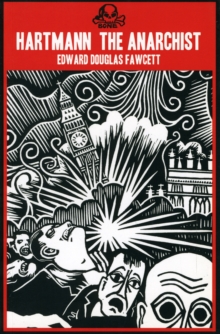If you thought Ursula Le Guin was the best of anarchist science fiction wait till you read "Hartmann the Anarchist: Or The Doom of the great city".
Rudolph Hartmann is one hell of a guy. It was just his misfortune to be born ahead of his time.
If in the summer of 2009 his airship The Attilla had appeared over London and blasted parliament to smithereens before moving off to annihilate the bankers in the city he would have been a national hero.
Even more so if he'd have taken a few of the Met G20 police officers out en route.
The country would have been at his feet. His analysis of the reasons to bomb the City of London show his prescient awareness of the evils of globalisation years before anyone else: 'His aim was to pierce the ventricles of the heart of civilisation, that blood that pumps the blood of capital everywhere, through the arteries of Russia, of Australia, Of India, through the capillaries of the fur companies of North America, mining enterprises in Ecuador and the trading steamers of African rivers'.
Echoing the old masthead of Green Anarchist, Hartmann wants nothing less than the 'destruction of civilisation' - achieved by pouring leaden death from the skies. No reformist he. But Hartmann has secret helpers on the ground - Nechaev style conspirators numbering 12,000 in London alone.
They have already blown up the Home secretary's house (Angry Brigade) and burned down half of rich Kensington.
There are of course - ahem - a few minor quibbles about Hartmann's class analysis - referring to the working class as 'the swinish multitude' he's not particular if they perish also as they 'have long colluded with the system'.
But this is to quibble in the face of genius - and anyway Hartmann is justifiably miffed with them for failing to rise up during his earlier assassination attempt on the Crown Prince on Westminster Bridge.
As with Emile Henri and Ravachol - there are no innocents for Rudolph Hartmann.
Anyway I take it that Hartman's contempt for 'the swinish multitude' is in fact nothing more than a modish rejection of late Victorian consumerism!
But just relax and enjoy parliament and the bankers in the City of London being annihilated by good old-fashioned bomb wielding anarchists.
Hartmann was written by E.Douglas Fawcett when he was only 17 years old and wanting to take Jules Verne's Captain Nemo and Robur the Conqueror one stage further than Verne anticipated. First published in 1892 and not reprinted in full for over 100 years this is a long lost must-read anarchist classic.
It spawned many others the best of which is Richard Chetwynd's "Angel of the Revolution" created a whole genre of crazed anarchist airship commanders with which to terrify the readers.
Many of these commanders were like Rudolph Hartmann 'members of the professional classes gone bad' leading even to what must be one of the most obscure doctoral theses of all time - 'Class treachery in airship commanders in late Victorian fiction' by Haza Shpayer- Makov.
Many of these can be viewed at the excellent 'Anarchism in Science Fiction' website.
What unfortunately can not be viewed is the 15 minute sci-film made by William Booth in 1911 "The Aerial Anarchists" based on Hartmann and showing the bombing of St.
Pauls. No footage has survived. For a 17year old public school boy E.Douglas Fawcett shows an amazing awareness of splits in the socialist movements and himself led a remarkable life.
He was a Theosophist, climbed the Matterhorn aged 66, was an accomplished skier and motorcycle racer, and became a pilot when he was 84. His younger brother was the famed lost explorer Percy Fawcett who vanished in the Amazon jungle in 1925 looking for the 'lost City of Z'.
Whether he ever found it we do not know but expeditions to 'Find Fawcett' were mounted for decades afterwards and sightings reported well into the 1960s.
The original illustrations in the book were by Fred Janes - a commercial artist with a penchant for death raining airships.
He went on to found the "Janes Fighting Ships" reference series which exists till this day.
I think Stanley Donwood has succeeded in capturing the spirit of these originals in a unique form. 'Hartmann' has for decades only been available at a prohibitive price in the E.
Arnold first edition published in 1892 or in the "Forgotten Fantasy" series in 1971 - which went belly up before they could publish the second half - or in some soulless print on demand version with no feel for the original.
So here it is at last - a lost anarchist classic. Comrades - Keep watching the skies! Ian Bone, 2009.

